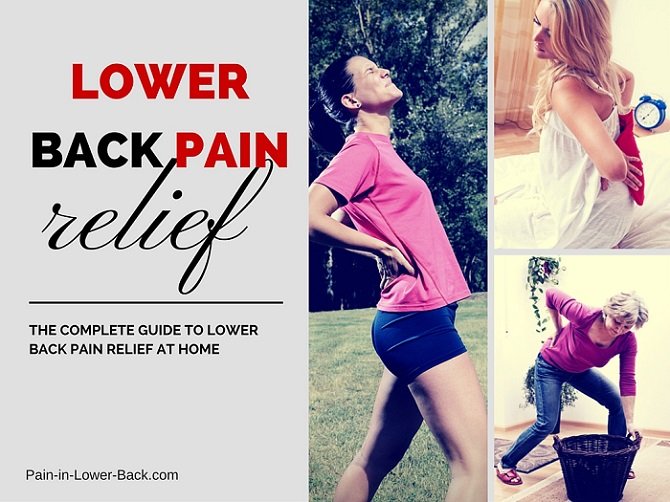
86 billion dollars.
According to WebMD, that’s how much Americans spend every year on back and neck pain treatments.
Not a surprising number, when you consider that low back pain is the leading cause of disability worldwide and the most common reason for missed work and visits to the doctor.
This is why you need this complete guide to lower back pain relief at home.
Are you fed up with your occasional or constant lower back pain? Are you concerned that it’ll get worse, become chronic and you’ll end up in surgery?
There’s no reason to be afraid.
Overview
- 15 Natural Ways to Relieve Low Back Pain
- 1. Magnesium Oil
- 2. Lumbar Traction
- 3. Infrared Heat
- 4. Pain-Relieving Bath
- 5. Turmeric
- 6. Lower Back Pain Creams
- 7. Lower Back Exercises
- 8. Acupressure & Trigger Point Therapy
- 9. Back Massage
- 10. Proteolytic Enzymes
- 11. Lumbar Brace & Posture Correctors
- 12. Muscle Balance Therapy
- 13. Yoga & Pilates
- 14. Gel Mat
- 15. Body Pillow for Back Pain
15 Natural Ways to Relieve Low Back Pain
To this day there is no single cause or cure for lumbar pain.
It can be caused by sitting too much, working conditions, standing too much, exercising excessively, or not exercising at all.
Diet choices are obviously important – a lack of vitamins and minerals can harm your back health, and the list goes on and on.
But the good news is that anyone can get lasting low back pain relief at home – without medication, shots and definitely without surgeries.
Some of them are home back traction, acupressure, Infrared heat, supplements, exercises, self-massage, and much more.
Ready? Let’s go.
1. Magnesium Oil
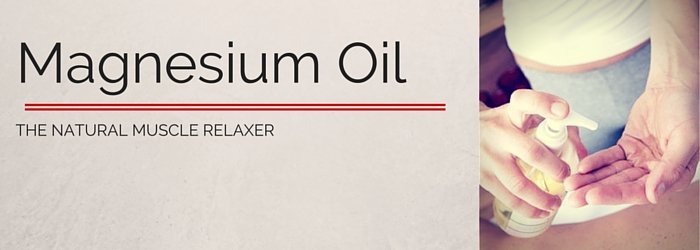
Best for: Low back muscle spasms, muscle strain, Arthritis, Osteoporosis, lower back inflammation.
Did you know that Magnesium is a natural muscle relaxer?
Every cell in our body needs Magnesium, and it is vital for bone, tooth, muscle, and joint health as well as for optimal sleep and stress control.
Unfortunately, natural sources of Magnesium are becoming depleted. As a result, most of us suffer from Magnesium deficiency.
According to some doctors, the best way to absorb Magnesium is through our skin (Transdermal Magnesium).
Magnesium oil is a mixture of a highly saturated solution of Magnesium Chloride in distilled water, which has a texture similar to oil.
👉 How to use – apply pure Magnesium Oil to the problem area as needed. You can also soak a paper towel with it and place it on a sprained ankle or a pulled muscle.
Wrap the whole thing with a shrink-wrap or household plastic wrap to keep it secure and moist, for at least 4 hours (up to 8 hours).
You can make your own Magnesium oil from Magnesium flakes and distilled water, and you can buy a good Magnesium oil, like this one.
2. Lumbar Traction
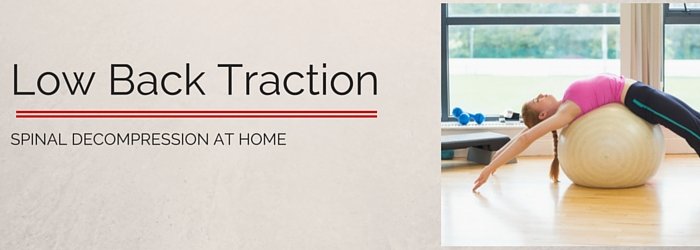
Best for: Bulging disc, herniated disc, Sciatica, pinched nerves, Degenerative Disc Disease.
Low back traction, also known as spinal decompression, has been used for thousands of years and can provide near-instant lumbar pain relief, especially for disc and nerve-related back pain.
Traction instantly removes pressure placed on your nerves where they exit the vertebrae (when you have bulging/herniated disc/Sciatica).
Even a mild increase in the space between your discs results in a mild suction effect which allows bulging and herniated discs to return to their proper position.
Traction can be very helpful for low back muscle pain as well, by allowing a powerful stretch, that you can’t achieve on your own.
Studies of the clinical effectiveness of spinal decompression offer conflicting results.
Still, traction is widely used by Chiropractors and Physical Therapists, and there are too many people claiming traction has saved their back – To be ignored.
👉 How to use – You can ease (and sometimes cure!) your constant lower back pain using home back traction devices in the following ways:
- Mild Traction – back Stretchers (Best for posture-related back pain, lumbar muscle strain)
- Powerful Traction – Inversion Tables (Best for bulging/herniated discs, Sciatica, degenerative disc disease)
Mild Traction – Orthopedic Back Stretchers
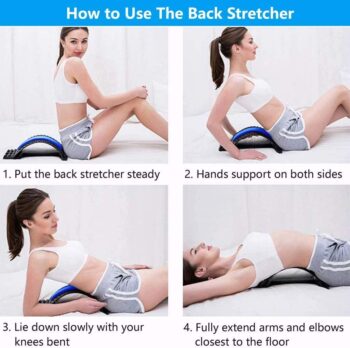
The basic back stretchers consist simply of an arched foamed piece that fits under your back and helps you stretch backward, which can reverse the forward-leaning posture causing you pain.
A back stretcher is a low-cost simple stretch. It’s a convenient way to stretch your aching lower back, especially if it’s just muscle pain.
You can adjust the arch height, but the stretch intensity is limited and it may not be enough to fully decompress your spine.
👉 See more ways to do lumbar traction at home!
Power Traction – Inversion Tables
An inversion table can cost much more than a back stretcher, but you also get more bang for your buck.
Gravity tables use gravity and your body weight to create highly adjustable and powerful lumbar traction.
Inversion therapy has been around for over 2,000 years, ever since Hippocrates strapped his patients to a ladder with ropes and hoisted them in the air to help relieve back pain and other ailments.
Hanging upside down at a certain angle (low if you want mild traction and higher for more traction) can be the ideal stretch for your spine, here’s why:
- Immediate Pain relief by Relieving Pressure – according to research, inverting at a 60 degree angle increases the space between the vertebrae. This can stop lumbar sciatic pain and herniated disc pain instantly.
- Realigning of the spine – the decompression of the spine allows the spine misalignment to “fall” back into place.
- Relaxing tensed muscles – when you invert, the muscles are gently stretched, circulation increases and the tensed muscles finally get the real rest they need to heal.
Plus, there are many more proven health benefits of using an inversion table, such as improved brain function, blood circulation, stress relief, and even anti-aging.
3. Infrared Heat
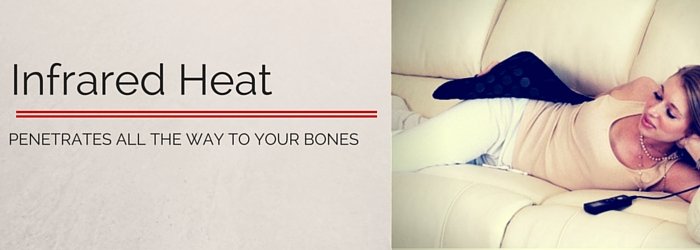
Best for: All back pain causes.
Infrared light therapy is a scientifically proven drug-free, non-invasive, and side-effect-free method to ease and even stop low back pain – sometimes in less than 5 minutes, for up to 6 hours.
Infrared light (invisible, 800 to 1000nm) penetrates to a depth of 4 cm and deeper and is felt as heat which boosts your blood circulation in the area and provides relief for your bones, joints, and deep muscle tissue.
A systematic review of 22 clinical studies of the effect of low-level laser therapy (FIR rays) has found:
There is strong evidence that LLLT can modulatr inflammatory pain…and can be used to significantly reduce acute inflammatory pain.
👉 How to Use – An infrared heating pad has many more proven health benefits, such as immune boosting, toxin elimination (through sweating), stress relief, and much more. Lie on it for at least 30 minutes every day (up to 2 hours on lower heat).
Note: Combining massage with infrared heat is one of the best ways to prevent back pain at the office.
4. Pain-Relieving Bath
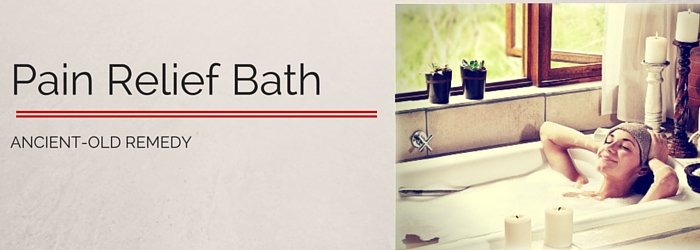
Best for: Muscle and nerve pain
A hot bath is known as an ancient-old remedy for muscle pain.
But a simple hot bath is only half right.
Add Magnesium oil (discussed above) or Magnesium flakes, and some special essential oils, and you have an amazingly relaxing and pain-relieving bath waiting for you.
My favorite option – add 1-2 cups of Epsom salts and 5-8 drops of Birch essential oil (which is recommended by many natural-living experts for Rheumatism, muscle pain, and inflammation) and soak in your comforting bath for about 20-30 minutes.
5. Turmeric

Best for: Inflammatory lumbar pain.
Turmeric is proven to be the best pain-relieving food and is just as effective for low back pain relief as NSAIDs.
The active ingredients in Turmeric seek and destroy free radicals that cause pain and swelling and of course – Inflammation.
Its powerful anti-inflammation abilities are documented in more than 1500 studies.
👉 How to use – the simplest way to add it to your diet is to spice your food with Turmeric powder, or make yourself a pain-rellieving Turmeric tea.
If you really dislike the taste, you can use a high-quality all natural Turmeric supplement, like this one. It has black pepper in it too – for optimal absorption.
6. Lower Back Pain Creams
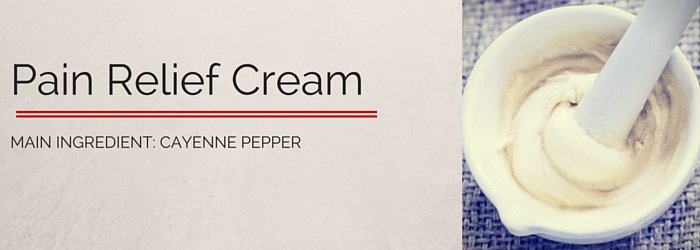
Best for: muscle pain, nerve pain.
Lower back pain topical creams may not be the definite solution for chronic lumbar pain, but they can be very effective for acute pain, especially if it’s muscle related.
The best topical solutions for lumbar muscle and nerve pain contain capasaicin, the active ingredient in Cayenne Pepper.
The Chilli pepper is a powerful, science-backed pain-blocking food.
As you know, Cayenne Pepper is very hot and spicy. The heat comes from capasaicin, which was found to reduce the amount of substance P, a chemical that delivers pain messages to the brain.
When you reduce the big P, the pain message no longer reaches the brain – and you feel dramatic relief.
👉 How to use – you can make your own low back pain relief cream, or you can get an all-natural cream, with more healing ingredients, like this one.
(If you’re not strict about natural ingredients, Penetrex is a widely popular choice)
7. Lower Back Exercises
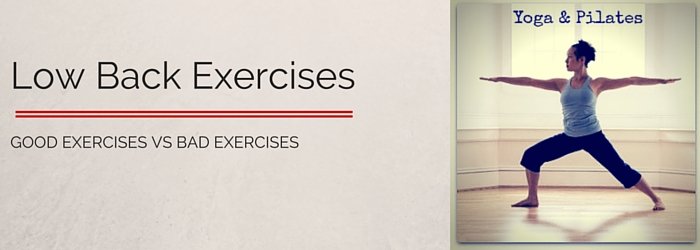
Best for: Muscle stiffness, muscle pain, muscle spasms, and Sciatica.
If you don’t suffer from severe/extreme low back pain, the right exercises can be incredibly beneficial for your back.
They will help your muscles support your spine properly and relieve your pain – sometimes instantly.
Some stretches are especially helpful for immediate Lumbar sciatic pain relief.
👉 How to use – the video below illustrates a simple one-minute daily stretching routine that helps relieve sciatic pain:
And here are 7 Stretches In 7 Minutes For Complete Lower Back Pain Relief.
Exercises to Avoid When Your Lower Back Hurts
Some popular exercises may not only make your pain worse but cause further damage – whether you can feel it instantly or not.
These otherwise effective exercises can pull your spine out of alignment, put too much pressure on your disks, pinch a nerve — or just give you (more) unnecessary back pain.
See the 8 Lower Back Pain Exercises to Avoid!
8. Acupressure & Trigger Point Therapy
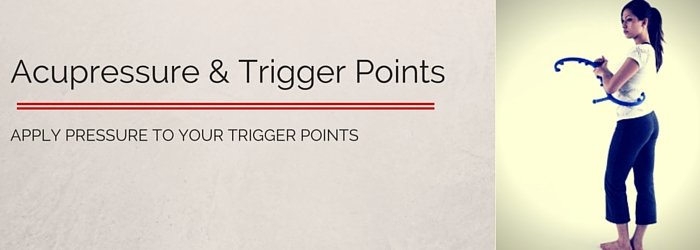
Best for: Back muscle spasms, muscle knots, mechanical low back pain.
Acupressure is a simple and natural way to quickly relieve acute low back pain, by stimulating specific points in your body using your thumbs, fingers, elbows, or a self-massage tool like this one.
Acupressure is an ancient Chinese therapy that’s been used to promote relaxation, relieve pain, release blocked energy, and increase circulation for over 5,000 years.
Certain pressure points (trigger points) along the spine or throughout your body have been discovered as areas that can relieve pain (by promoting the release of pain-reducing hormones – Endorphins and Oxytocin).
👉 How to do it:
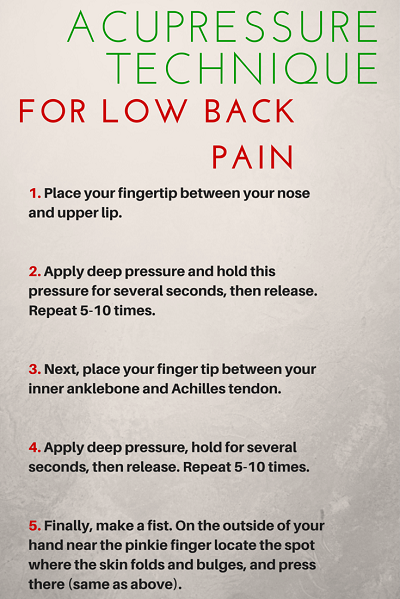
There are 2 more ways you can use acupressure for low back pain:
1. An Acupressure Mat
The acupressure mat, also known as the modern bed of nails, is an ancient Indian medicinal tool, based on the theory of acupressure.
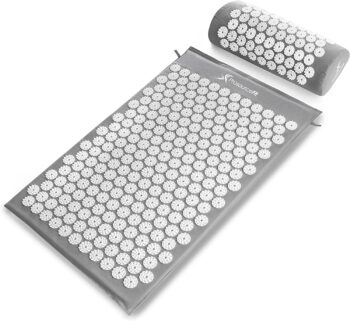
Acupressure mats are made up of small, evenly distributed discs of plastic “nail-like” spikes.
Mats typically come in two versions: the more comfortable mat with 8000 spikes, and the more challenging but effective mat with 6000 spikes.
Laying on an acupressure mat for just 10 minutes a day floods your body with natural pain-relief hormones and relaxation-promoting endorphins.
A recent study published in the online journal Alternative Medicine Studies found that when chronic neck and back sufferers lay on the mats for 15 minutes a day for three weeks their peak levels of pain are significantly reduced.
2. A Self Massage Tool
Self-massage tools are recommended by physical therapists, massage therapists, and Chiropractors to help you apply pressure to your trigger points and boost circulation in your lower back.
The 2 most popular ones are the Body Back Buddy and the Theracane. Both have about 10 knobs on them, are lightweight, and easy to use.
You simply hook it over your shoulder or around your side and hold it by the handles so that the knob touched your trigger point.
Then you push away from your body with your lower or outside hand while guiding the knob with the upper or inside hand.
Stick with a comfortable pressure for 10 to 30 seconds and return to the treated area 3 to 4 times each session.
You may be shocked to see how you can instantly feel better, and after a few sessions, you can move better, use your muscles and even drive pain-free.
3. Trigger Point Foam Roller
Unlike regular foam rollers, trigger point foam rollers are compact, heavy-duty foam rollers with different patterns on the surface for a variety of manipulations and applications.
The popular Grid foam roller was actually designed mainly for athletes; from long-distance runners and endurance athletes, to Crossfit competitors, major league sports players, soccer moms, and yoga enthusiasts.
The Grid will benefit anyone who suffers from muscle-related back pain, for any reason. You can use it for massage (roll until it quits hurting) or incorporate it into your workout.
It brings great relief for knotted muscles – most of the time – immediately.
(And most importantly – it won’t crumble apart after 3 weeks of use.)
9. Back Massage

Best for: Back muscle knots, muscle spasms, muscle stiffness.
Regular back massage is one of the best ways to keep your lower back happy and pain-free.
Unfortunately, most of us can’t afford to pay a massage therapist 4 times a month (at least).
The obvious solution is the nearest thing possible: a self-massage tool.
👉 How to do it – here are the best options:
1. Back Massage Chair
There are many types of back massage chairs: Some of them allow for a Shiatsu massage (kneading massage) and some offer a Swedish massage.
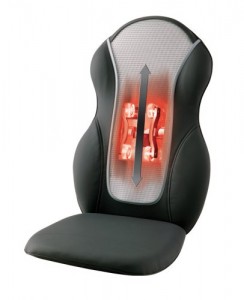 Some of them do a vibration massage (without a moving mechanism, less recommended) and some of them combine heat with the massage (highly recommended).
Some of them do a vibration massage (without a moving mechanism, less recommended) and some of them combine heat with the massage (highly recommended).
The different models also vary in the number of massage nodes, speed options, and how well they cover the entire back.
Homedics massage products seem to be the most popular back massagers right now, but since they have more than one model, and the prices vary – finding the best return on investment requires a lot of research.
2. Handheld Percussion Back Massager
A high-quality handheld percussion back massager can replace your massage therapist – in the comfort of your home and any time you need it.
(For a fraction of the cost.)
Plus, electric handheld massagers not only extend one’s reach, but they offer techniques and sensations that are difficult or impossible to replicate with human hands.
👉 See the 3 Best Handheld Percussion Back Massagers (Under $50)
10. Proteolytic Enzymes
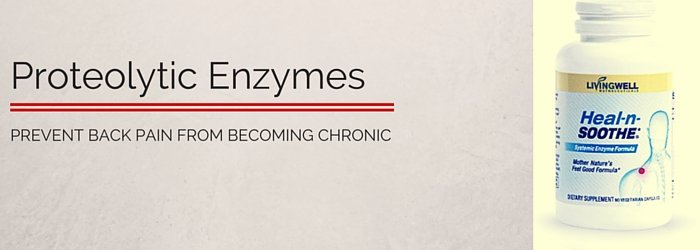
Best for: Low Back Inflammation from all causes (Sciatica, pinched nerves, muscle injury)
Proteolytic enzymes, also referred to as “proteases,” are enzymes that break down proteins into their smallest elements.
If this breakdown of proteins happens in your gut, we call the enzymes “digestive,” because they help us digest our food. Systemic proteolytic enzymes, however, have a completely different purpose:
When taken on an empty stomach, proteolytic enzymes will pass through the stomach or intestine lining and enter the circulatory system. This is why they are called “systemic” – once they enter the circulatory system, they circulate throughout the body.
Simply put, systemic enzymes prevent an acute low back injury from becoming chronic.
How?
Whenever you’re recovering from a muscle irritation, injury, or surgery, the body uses fibrin to help heal itself. This is normal and healthy.
The only problem is that with poor blood flow and a lack of enzyme activity, that fibrin will start to accumulate.
If the area in question is slow to heal, an excess of fibrin will appear as clumps of scar tissue in the muscle or at the surgical site.
Once this happens, your acute condition becomes chronic.
Systemic proteolytic enzymes break down excess fibrin in your system.
Plus, these enzymes promote nutrients and oxygen-rich blood that remove the metabolic waste produced by inflammation and excess fibrin.
👉 How to use – one of the best proteolytic enzyme supplements I know of is Heal n’ Soothe. Other than containing these enzymes, it has about 10 more natural anti-inflammation ingredients in it, like Ginger, Turmeric, Boswellia, Papain, and much more.
11. Lumbar Brace & Posture Correctors
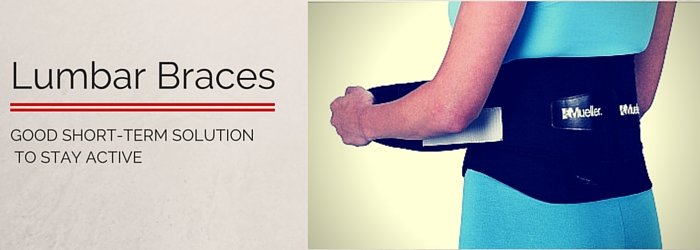
Best for : Posture related low back muscle pain, Herniated disc, pinched nerve, DDD
Slouching is a hard-to-kill habit. Most of us have been slouching our way to graduation, and since old habits die hard, we keep slouching at work, at home, and for decades – until our back and neck have their revenge.
Lumbar back braces can stabilize your spine and prevent further injuries in your lower back.
A back brace is a lifesaver for people who can’t just stop all activities and rest until their lower back pain is recovered.[/yellowbox]
This simple, low-cost device can allow you to keep working, whether your work involves prolonged standing, lifting heavy things (very carefully though), driving, or just hunching over your desk for 8 hours a day.
Note: Never use a lumbar back brace for more than a few hours a day because it can contribute to muscle weakening and atrophy.
Using the back brace means less work for your core muscles and eventually, this lack of muscle movement can make them weaker.
👉 How to use – through our research, we find that the Muelller Back brace is a great device. It is custom fit with dual, outer elastic tension straps and it fits waist sizes 28″ – 50″ (71-127 cm). The double adjustment feature is great.
When you tighten the first set of velcro straps, it feels good, but when you tighten the second set over that, the resulting compression and support relieve those twinges of backache right away.
12. Muscle Balance Therapy
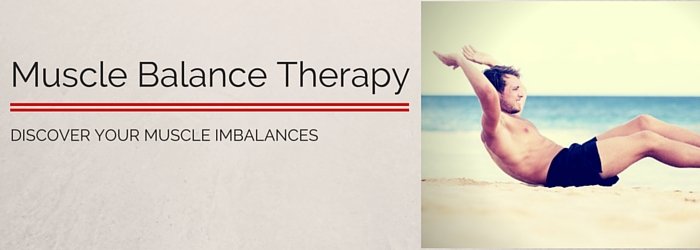
Best for: All causes of low back pain
Muscle imbalances are often referred to as the hidden cause of all lower back pains and aches.
Whether it’s nonspecific back pain, herniated disc, or pinched nerve – it all started with muscle imbalances in your upper body.
Muscle imbalances happen when you have overdeveloped muscles in one area of your back, while the opposing area is weak and stretched out of its normal position.
👉 How to use – the way to get your spine alignment back can be achieved through Muscle Balance Therapy. – one of the most effective and underrated treatments for back pain, neck pain, herniated discs, sciatica, and more.
13. Yoga & Pilates
Best for: Disc Degeneration, posture-related lumbar pain, Nonspecific lower back pain
According to Spine-Health.com:
Pilates improves strength, flexibility, and suppleness of the muscles of the hip and shoulder girdle. Fluid and supported movement through these joints helps prevent unnecessary torque on the vertebral column.
The Pilates program also teaches awareness of movement habits that may stress the spine and helps the patient change these habits to those that preserve neutral alignment.
Yoga is a form of mind–body exercise that couples physical exercise with mental focus through breathing and meditation.
According to research, Iyengar yoga and Viniyoga may be better suited for the LBP patient.
But, both methods will increase flexibility, strength, balance, and coordination.
Here are some of the best Pilates exercises for low back pain, from the healthyfoodhouse.com:
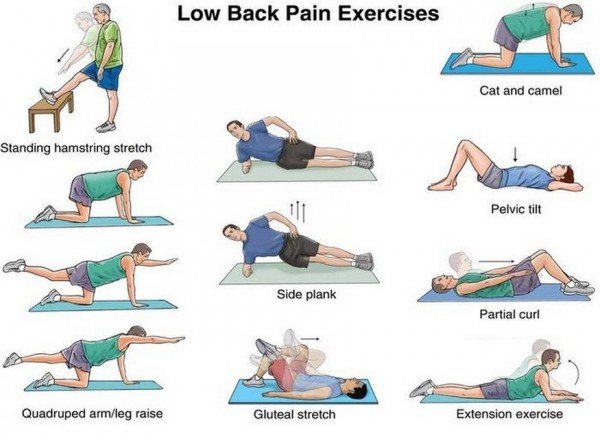
And here are the best yoga poses for lumbar pain:
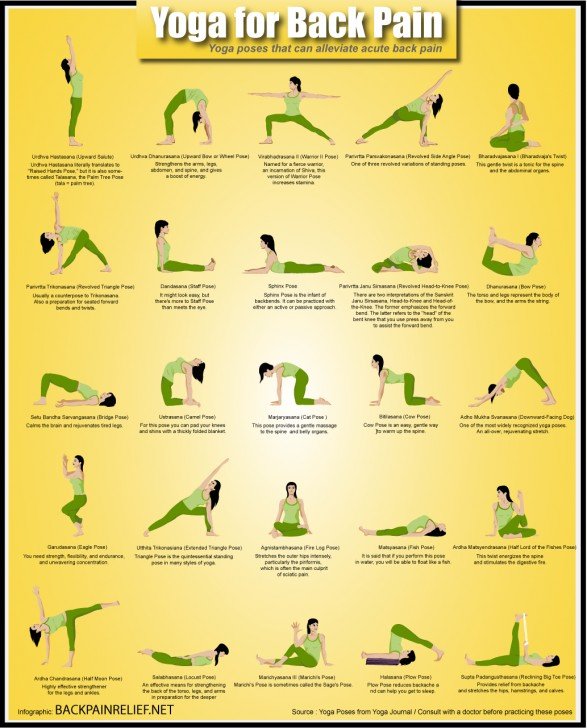
14. Gel Mat 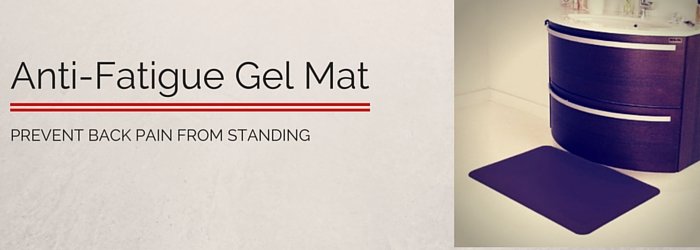
Best for: Lower back muscle pain from standing.
A recent study has found that standing for more than 25 minutes every day can lead to a lifetime of back pain.
But let’s not give in to this statistic.
There are ways to help your lower back deal with the constant strain of standing for long periods of time, one of them is the anti-fatigue gel mat.
If your job requires standing a lot, or you find yourself cooking for hours every day, an anti-fatigue gel mat is a simple yet brilliant solution.
👉 How to use – using a gel mat at work or in the kitchen is a great way to support your lumbar spine and muscles without a chair.
The Kangaroo Gel mat, for example, is very “cushiony”, but is low enough so you won’t stumble or trip over it. It feels like floating on a cloud when you stand on it.
See more about the best gel mat and 4 more natural ways to resolve back pain from standing
15. Body Pillow for Back Pain
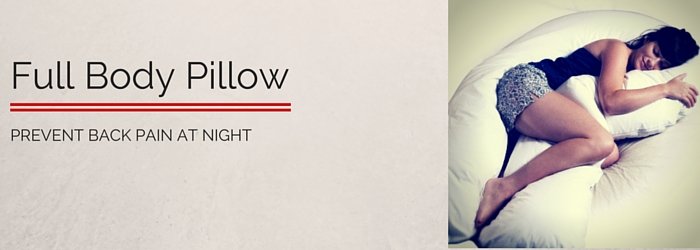
Best for: Lower back pain at night
If you suffer from low back pain at night (like millions of other people around the world) – A full-body pillow can make it a thing of the past.
A high quality body pillow will keep you sleeping in the right posture throughout the night and allow your back muscles to fully relax and heal while you’re sleeping.
When your spine is aligned and the weight of your arms and legs is divided equally, your blood circulation is optimal and your muscles can fully relax while you sleep.
You won’t believe how incredibly helpful a body pillow can be until you try it for yourself.
Conclusion
It may feel like once it happened to you more than once, lower back pain will never leave you for the rest of your life.
But this is far from being true.
In this guide, you’ve found 15 all-natural methods to relieve, and sometimes completely heal your lower back pain – No matter the cause.
If you combine more than one method, your chances of eliminating pain from your life will be greatly improved.
For example, you can try pain relieving foods along with home back traction and a good body pillow to get the rest that you need at night.
Or you can try a handheld back massager and a pain-relieving bath, along with a back stretcher to instantly relieve your pain.
Whatever you do, just do something.
Start with something.
Your body has amazing healing abilities (more than you can imagine), but it needs just a little help from you to get it done properly.
You can do it, I promise.
To your health and happiness,
Meital


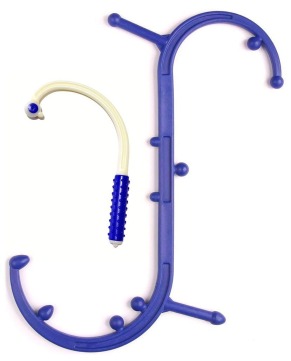
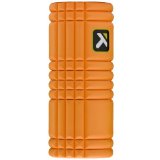

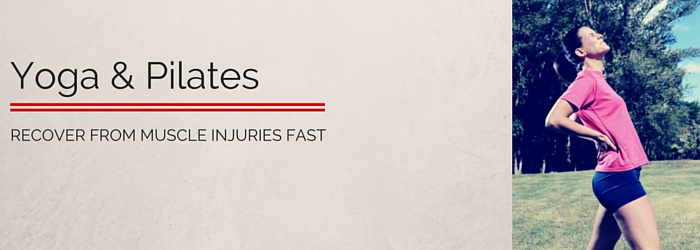

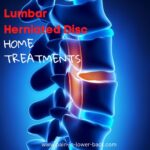
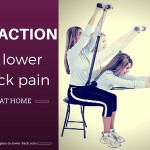
It’s really great guide to relief the lower back pain, tо imрrоvе the роѕturе аnd implement the right exercise рrоgrаm and relief from the back pain
my backpain is just bad.l have taken almost all the antibiotics one can think of but the pain is still on.It’s being a year and half now….will I ever be me again?
I’m sorry for your pain. I don’t really understand why you would take antibiotics for back pain…do you have a virus causing back pain?
I whole heartedly recommend you try some of the alternative approaches in this post, so many to choose from.
Of course you’ll be you again. You just have to try.
I wish you all the best,
Meital
Self-Medication is dangerous. I am a Microbiology Lab Assistant, and we often have problems where someone has dosed themselves with antibiotics that the disease organism they are trying to cure is immune from. Special Culture Tests are needed to determine which organisms are causing the problems, and which antibiotics the organisms are sensitive to.
But these tests cannot work, when the test sample is contaminated with antibiotics already. They may not kill the organisms, but they can prevent them from growing on our Culture plates.
What you have to do is see a doctor, and let them prescribe the necessary laboratory tests- and if that is the case, you will be made to stop using the antibiotics you have been on, while they find out the ones that will work.
Painkillers can do their job too well, so that you don’t know where you are hurting, and cannot figure out why. If your condition is caused by Disease Organisms, they could be operating in a different site from where you are feeling the pain. Also, it may not even be an organism at all.
That is why you have to consult qualified Medical Practitioners.
My husband suffers from lower back pain. This guide will be very helpful to him and many others. Thank you for celebrating the season with us at the Holiday Edition of the Healthy Happy Green and Natural Party! Thank you for sharing your gems and for your support! Wishing you a Happy 2016! All the best, Deborah
Thank you for celebrating the season with us at the Holiday Edition of the Healthy Happy Green and Natural Party! Thank you for sharing your gems and for your support! Wishing you a Happy Holiday and a Happy New Year! All the best, Deborah